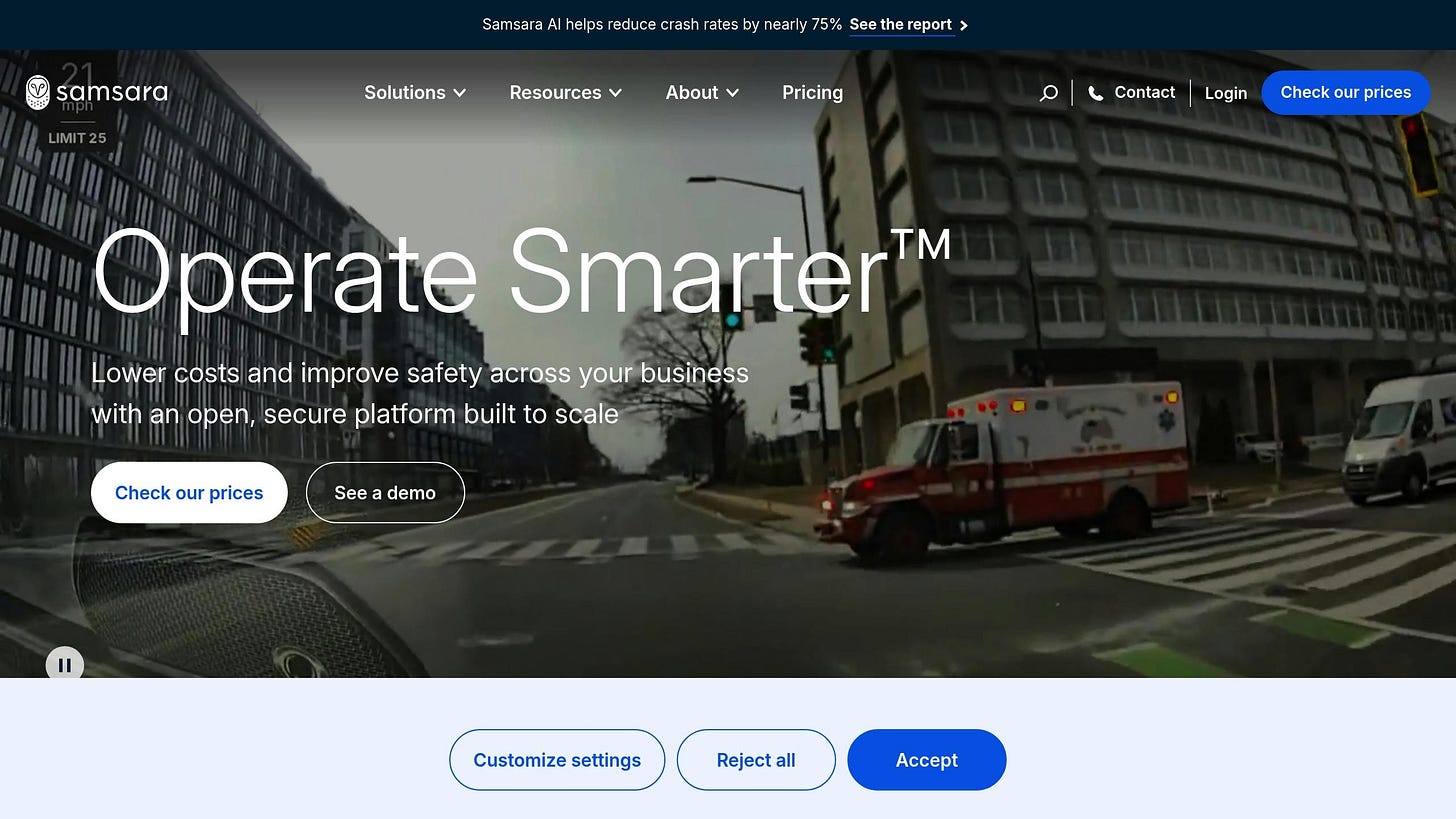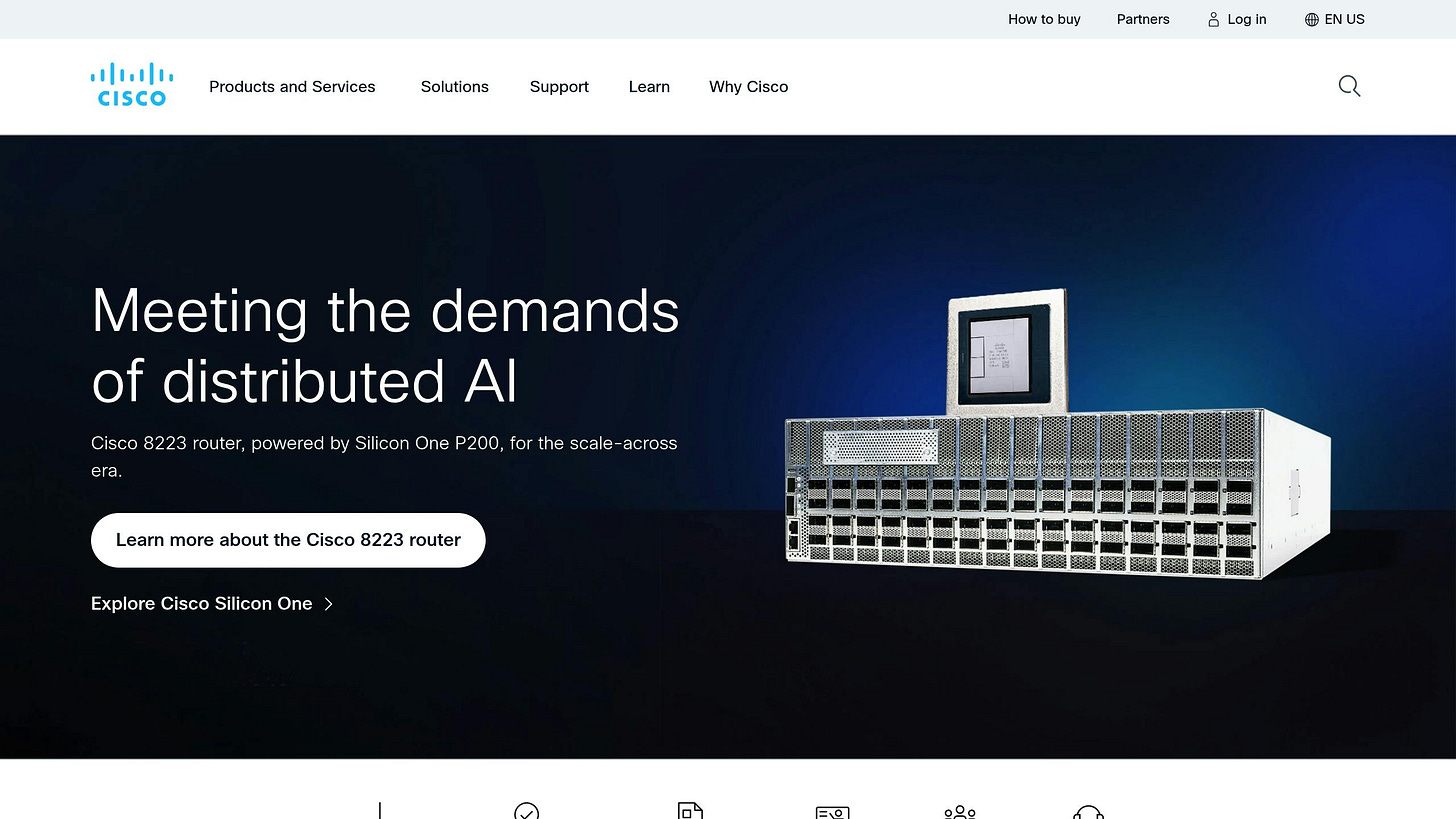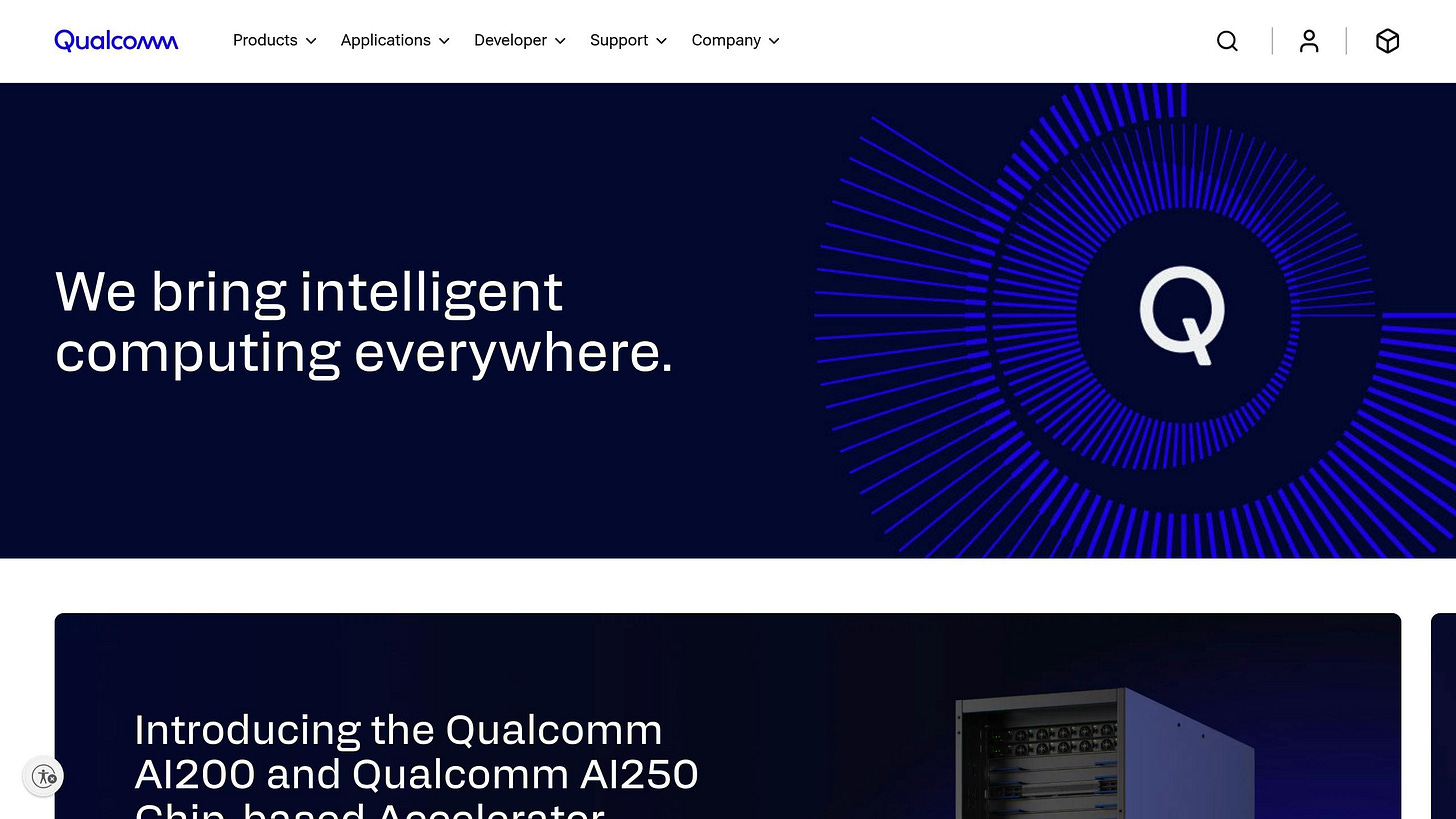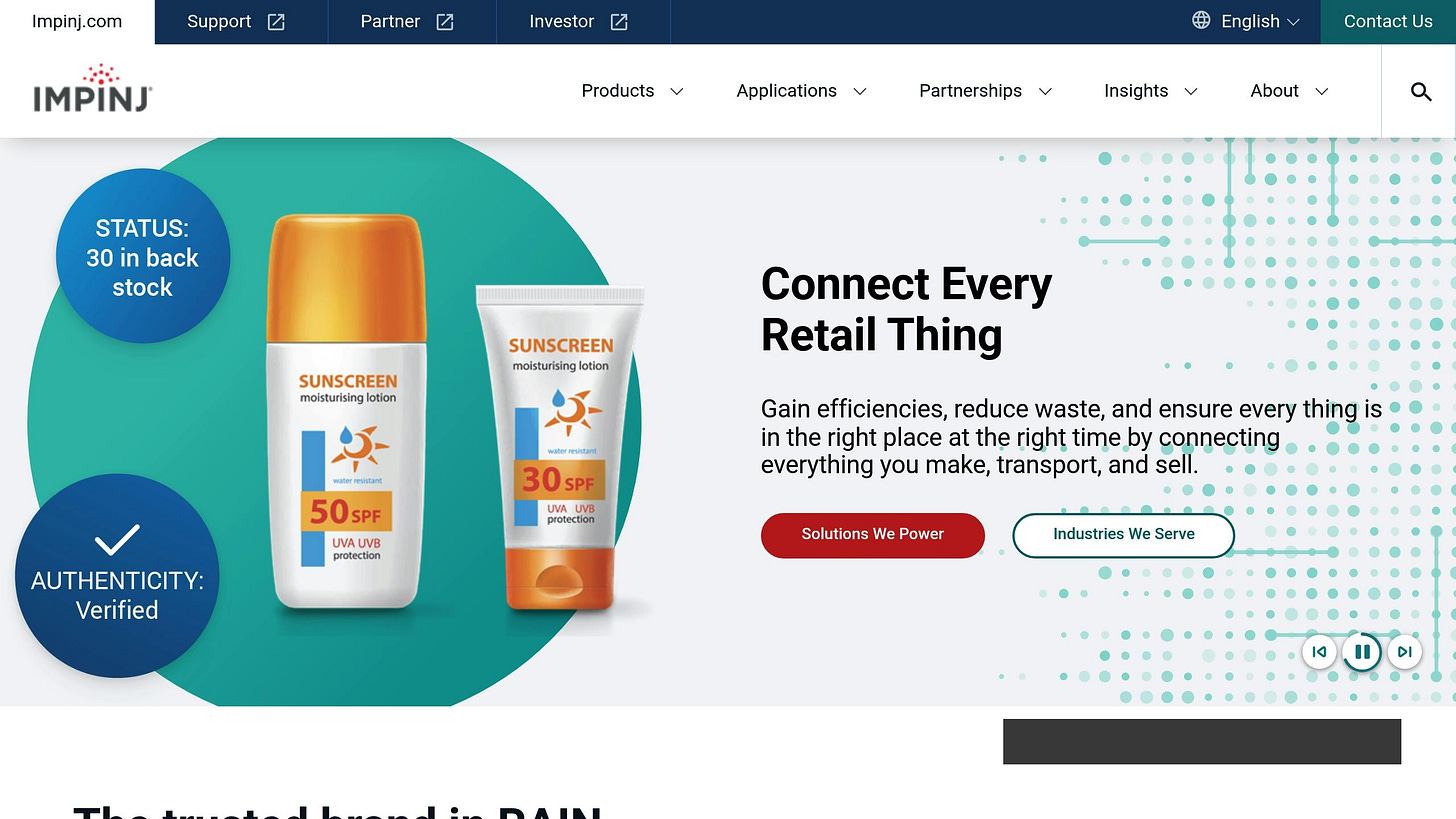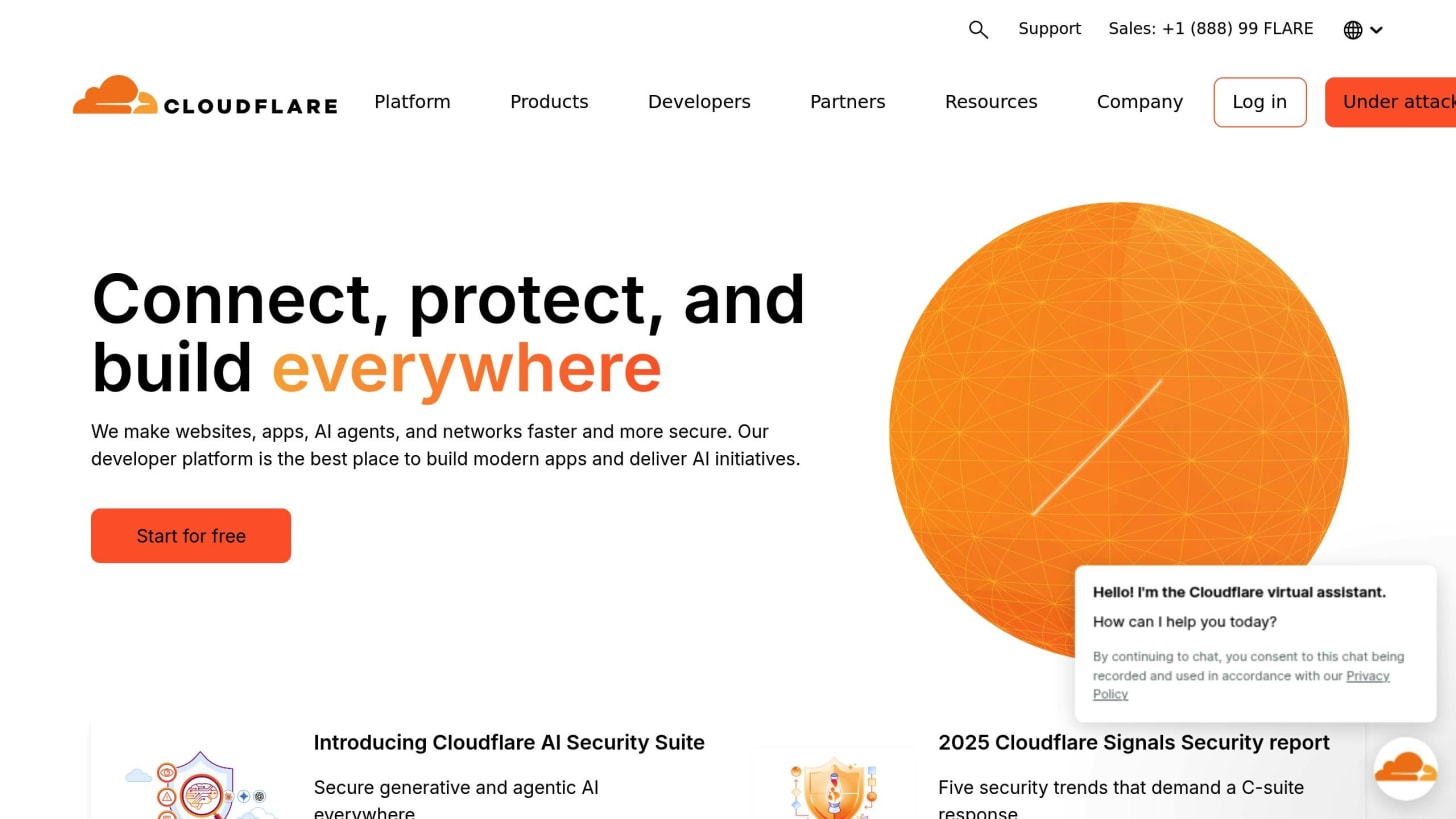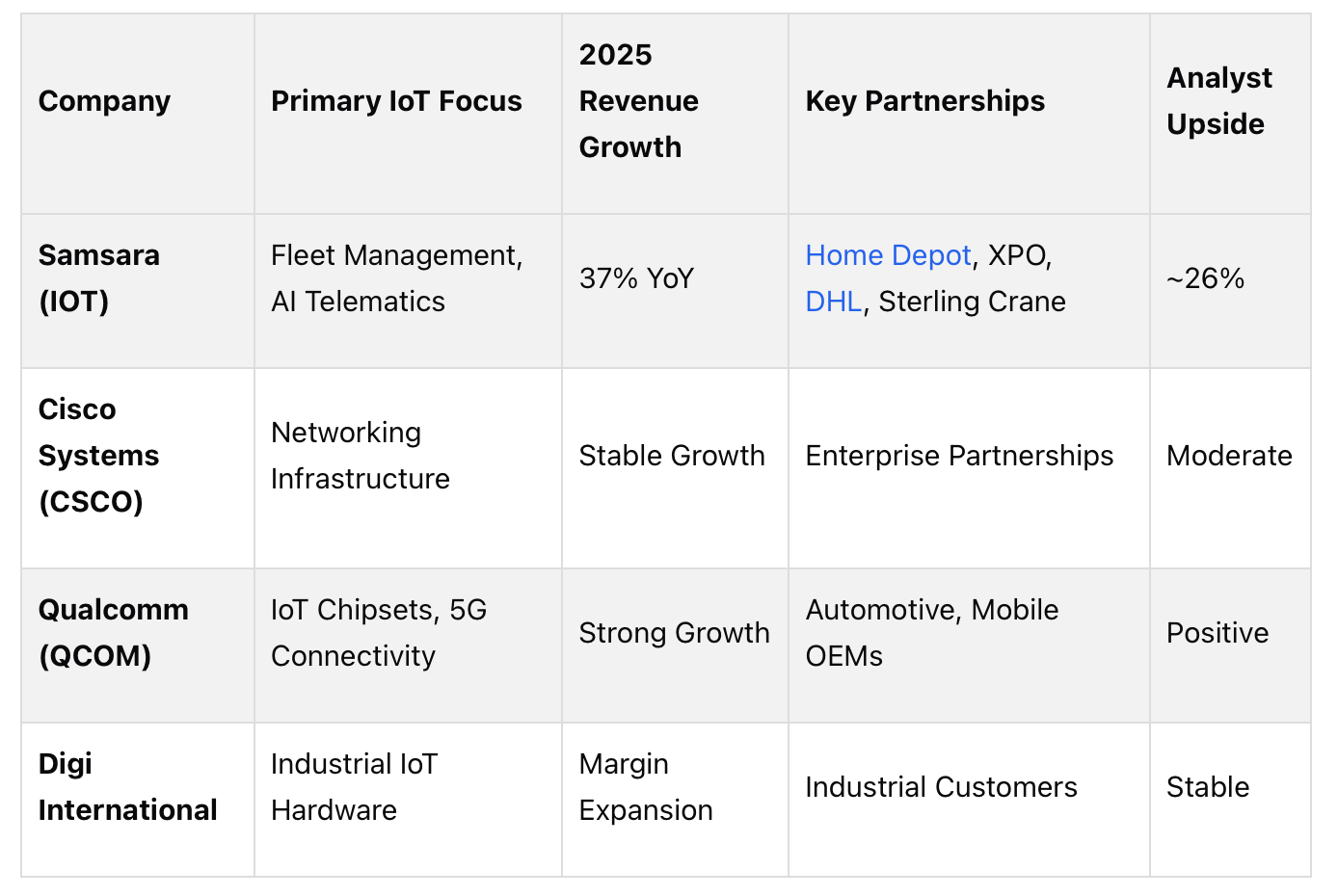Top 10 IoT Stocks for 2025
Explore the top IoT stocks for 2025, highlighting key players shaping the future of connected devices and investment opportunities.
Top 10 IoT Stocks for 2025
The Internet of Things (IoT) is expanding rapidly, connecting billions of devices and creating significant investment opportunities. By the end of 2025, IoT devices are projected to reach 21.1 billion globally, growing at an annual rate of 14%. This growth is driven by advancements in AI, edge computing, and connectivity, reshaping industries like automation, logistics, and consumer electronics.
Here’s a quick look at the top 10 IoT stocks to consider for 2025, based on their market leadership, financial performance, and alignment with key trends:
Cisco Systems (CSCO): A leader in networking infrastructure, offering secure, scalable IoT solutions for enterprises and governments.
Qualcomm (QCOM): Dominates IoT chipsets with advanced 5G and AI capabilities.
Skyworks Solutions (SWKS): Specializes in RF chips for wireless communication across IoT devices.
Impinj (PI): Focuses on RAIN RFID technology, enabling real-time tracking in supply chains and retail.
Cloudflare (NET): Provides secure, low-latency connectivity and Zero Trust security for IoT networks.
Samsara (IOT): Offers IoT platforms for fleet management and industrial operations, leveraging AI and edge computing.
SiTime Corporation (SITM): Supplies MEMS timing solutions critical for IoT device reliability.
Ondas Holdings (ONDS): Delivers secure wireless connectivity for industrial IoT in transportation and energy.
Ambarella (AMBA): Develops edge AI chips for real-time video and AI processing in IoT devices.
Garmin (GRMN): Combines IoT hardware and software for wearables, automotive systems, and industrial applications.
These companies are shaping the future of IoT by addressing diverse needs, from industrial automation to smart cities and consumer devices. Whether you’re looking for growth stocks or stable performers, these picks offer a range of opportunities in the evolving IoT landscape.
SAMSARA (IOT STOCK): Next Palantir?
1. Cisco Systems (NASDAQ: CSCO)
Cisco Systems stands as a global leader in networking, playing a crucial role in the growth of the Internet of Things (IoT). While many startups in the IoT space focus on rapid innovation, Cisco provides the trusted infrastructure that enterprises rely on for seamless IoT connectivity.
Leading the Way in IoT Hardware, Software, and Connectivity
Cisco’s strength in the IoT market lies in its wide-ranging solutions, which include industrial switches, routers, gateways, and secure device management tools. These technologies form the backbone of critical systems like energy smart grids, connected manufacturing facilities, and advanced transportation networks. Trusted by Fortune 500 companies and government agencies alike, Cisco delivers the dependable infrastructure needed for advancements in edge computing and industrial automation. This reliability has cemented its role as a cornerstone in the IoT ecosystem.
Staying Ahead with Emerging IoT Innovations
Cisco’s edge computing solutions are designed to process data in real time, cutting down on latency and improving operational efficiency. In the industrial IoT space, its technology supports predictive maintenance, real-time asset tracking, and grid management. These capabilities are essential for mission-critical applications, reinforcing Cisco’s strong position in the rapidly evolving IoT landscape.
Building an IoT Ecosystem Through Strategic Partnerships
Beyond its technology, Cisco has forged strategic alliances with leading cloud providers and automation companies. These partnerships enable smoother integration across platforms and broaden its reach into areas like smart cities and connected vehicles. By combining its networking expertise with these collaborations, Cisco is well-positioned to thrive as IoT adoption continues to expand.
2. Qualcomm Incorporated (NASDAQ: QCOM)
Qualcomm plays a key role in global IoT connectivity, providing chipsets that power billions of devices, from industrial sensors to home gadgets.
Leadership in IoT Hardware, Software, and Connectivity
Qualcomm’s Snapdragon and QCA chipsets, equipped with Wi-Fi, Bluetooth, and 5G capabilities, are the backbone of many IoT applications. Its robust patent portfolio and influence in setting wireless communication standards further cement its dominance in the market.
By integrating AI and edge computing into its chipsets, Qualcomm enables real-time processing for devices like smart home hubs, wearables, and industrial gateways. These technical advancements ensure the company stays ahead in the rapidly evolving IoT space.
Staying Ahead in Emerging IoT Trends
The fusion of AI, 5G, and IoT is unlocking new possibilities, and Qualcomm sits at the center of this transformation. With edge computing gaining importance - particularly in industrial environments where instant decisions can prevent costly equipment failures - Qualcomm’s chipsets deliver real-time analytics directly at the device level. Its leadership in 5G strengthens its ability to support next-gen IoT solutions, making Qualcomm a key player in driving the sector’s digital evolution.
Strategic Partnerships and Broad Customer Reach
Qualcomm leverages its technological expertise through strategic alliances to expand its influence in the IoT ecosystem. Collaborations with Microsoft, automotive leaders, and industrial automation companies enhance its reach. Its diverse customer base includes global consumer electronics brands, automotive manufacturers, and industrial equipment firms, supporting applications like smart home devices, connected vehicles, and real-time industrial monitoring.
For those interested in capitalizing on IoT growth, resources like The Predictive Investor often spotlight Qualcomm as a top pick. This investing newsletter, written by a Silicon Valley expert, focuses on identifying high-growth technology stocks and boasts a strong track record of outperforming the S&P 500.
3. Skyworks Solutions (NASDAQ: SWKS)
Skyworks Solutions plays a crucial role in making IoT connectivity possible. The company specializes in radio frequency (RF) chips that power wireless communication in a wide range of smart devices. From smartphones to industrial sensors, their analog semiconductors are foundational to IoT networks.
Leadership in IoT Hardware and Connectivity
Skyworks holds a leading position in the RF front-end module market, which is essential for delivering fast and reliable wireless communication. Their technology supports everything from smartphones and smart home devices to wearables, automotive systems, and industrial equipment. With a portfolio that includes 5G, Wi‑Fi 6/6E, and LPWAN technologies, Skyworks is well-positioned to benefit from the growing IoT market, which is expected to include 21.1 billion devices by the end of the year.
Financial Growth and Performance in 2025
In 2025, Skyworks achieved steady revenue growth, largely fueled by the rising demand for IoT-enabled devices and advancements in wireless infrastructure. The IoT and automotive segments stood out with double-digit growth, reflecting increased adoption across industries. The company’s strong profitability and expanding IoT footprint highlight its ability to thrive in a world increasingly shaped by digital transformation. This financial momentum has also allowed Skyworks to broaden its strategic partnerships.
Expanding Partnerships and a Diverse Customer Base
Skyworks has forged key partnerships with major companies like Apple, Samsung, and Amazon, embedding its RF technology into a wide range of consumer and industrial IoT products. These collaborations extend beyond consumer electronics to include automotive manufacturers and industrial automation companies, showcasing the company’s extensive reach across the IoT ecosystem.
Its customer base includes top consumer brands and manufacturers that rely on sensor networks for predictive maintenance. Skyworks’ solutions have proven valuable in industrial applications by reducing downtime and lowering operational costs through improved wireless connectivity. These partnerships and applications underscore the company’s pivotal role in driving IoT adoption across both consumer and industrial sectors.
4. Impinj (NASDAQ: PI)
Impinj is a key player in the RAIN RFID space, offering hardware and software solutions that connect billions of everyday items to the Internet of Things (IoT). Their expertise lies in radio frequency identification technology, which enables wireless tracking and identification across various industries, including supply chain management, retail, healthcare, and industrial operations.
Leading the IoT Hardware Market
Impinj has carved out a dominant position in the RAIN RFID market, thanks to its advanced ultra-high frequency (UHF) RFID technology. This technology plays a critical role in large-scale IoT projects by turning non-electronic items into connected data points. To date, the company has shipped over 4 billion RFID endpoint integrated circuits (ICs), showcasing its extensive market reach.
Impinj’s platform integrates high-performance hardware with sophisticated analytics, delivering superior read accuracy, range, and energy efficiency compared to conventional RFID systems. This technological advantage has made it the go-to choice for Fortune 500 retailers and global logistics firms seeking reliable, item-level connectivity. This strong market position has also translated into impressive financial results.
Financial Growth in 2025
In Q3 2025, Impinj reported an 18% year-over-year increase in revenue, driven by rising demand for RFID solutions in retail and logistics as companies ramp up their digital transformation efforts. The company also maintained a solid gross margin of 53%, reflecting its ability to scale operations efficiently and leverage higher-margin software offerings.
This sustained revenue growth highlights Impinj’s ability to meet the increasing demand for real-time asset tracking and supply chain optimization across multiple industries.
Aligning with IoT Trends
Impinj’s technology is increasingly integrated with edge computing platforms, enabling real-time data processing directly at locations such as warehouses, factories, and retail stores. This capability supports industrial IoT applications like asset tracking, inventory management, and predictive maintenance.
By seamlessly working with modern edge devices and cloud platforms, Impinj stays highly relevant as IoT adoption continues to grow. The company also benefits from the broader shift toward automation and the rising need for real-time visibility in supply chains. These advancements strengthen Impinj’s position in the IoT ecosystem.
Strategic Partnerships and Expanding Customer Base
Impinj has built strong partnerships with top technology firms, logistics providers, and global retailers who rely on its RFID technology for critical functions like inventory accuracy and loss prevention. Its customer base includes Fortune 500 companies and major logistics players, many of whom integrate Impinj’s RFID solutions into their broader IoT platforms.
These partnerships not only provide recurring revenue but also open doors for introducing new solutions. Additionally, Impinj actively participates in IoT standards organizations and developer communities, ensuring its technology remains compatible with emerging innovations. This approach positions the company for sustained growth as the IoT market continues to expand.
5. Cloudflare, Inc. (NYSE: NET)
Cloudflare focuses on providing secure and scalable network services that connect billions of IoT devices worldwide. Instead of producing IoT hardware, the company delivers the critical infrastructure needed to keep these devices connected, secure, and efficient across global networks.
Market Leadership in IoT Connectivity and Security
Cloudflare’s network spans over 300 cities across more than 100 countries, ensuring low latency and high reliability for IoT devices, no matter their location. The company has become a leader in the Zero Trust security model, a system that assumes every IoT device could be compromised and requires constant verification and authentication. With an estimated 21.1 billion IoT devices expected by the end of 2025, growing at an annual rate of 14%, Cloudflare’s Zero Trust approach is designed to address the rising security challenges in this interconnected landscape. This strategy aligns seamlessly with broader IoT trends.
Financial Growth and Performance in 2025
Cloudflare has achieved double-digit revenue growth in 2025, fueled by the increasing demand for secure IoT connectivity and edge computing solutions. Its recurring revenue model ensures financial stability, while its expansion into new IoT markets supports continued growth. Enterprise clients, managing large-scale IoT deployments, increasingly rely on Cloudflare’s platform, further driving its strong financial performance in a rapidly expanding sector.
Advancing Edge Computing for IoT
Cloudflare’s edge computing technology processes data in real time, reducing latency and enabling quick decision-making. By bringing data processing closer to where it’s generated, the platform supports time-sensitive applications like smart cities, industrial automation, and connected vehicles. The Workers platform, in particular, processes IoT data at the network edge, offering a significant advantage for industries that depend on rapid response times.
Strategic Partnerships and Enterprise Integration
Leveraging its technical expertise, Cloudflare has built strong relationships with leading enterprises in industries like manufacturing, logistics, and smart infrastructure - areas where IoT adoption is accelerating. Partnerships with cloud providers, device manufacturers, and IoT platform vendors strengthen Cloudflare’s position as an essential infrastructure provider for IoT security and reliability. These collaborations have resulted in deep integration with enterprise IoT platforms, enhancing customer loyalty and offering valuable insights into future IoT developments.
6. Samsara (NYSE: IOT)
Samsara provides real-time insights for businesses through its integrated IoT platform, combining hardware sensors and cloud-based software to enhance fleet management and industrial operations.
Leadership in IoT Solutions
Samsara stands out in the IoT space, particularly in fleet management and industrial applications. Its offerings - like fleet tracking, predictive maintenance, and driver safety monitoring - help businesses achieve tangible gains in operational efficiency.
Financial Highlights and 2025 Growth
In Q2 2025, Samsara reported revenue of $391.5 million, marking a 30.4% increase compared to the previous year. The company also delivered a non-GAAP EPS of $0.12, outperforming estimates by 65.6%, which led to a 9.4% rise in its stock price. Analysts now expect full-year EPS to range from $0.16 to $0.18, surpassing the consensus estimate of $0.13. These results reflect Samsara’s ability to reinvest in advanced technologies like AI and edge computing.
Riding the Wave of IoT and AI Trends
Samsara is leveraging its strong financial foundation to integrate AI and edge computing into its platform. This approach enables the company to turn data into actionable insights, placing it at the forefront of IoT and AI advancements.
Partnerships and Market Potential
The company has established key partnerships with major logistics and industrial players, creating a robust network effect that bolsters its recurring revenue model. Analysts are optimistic, with an average 12-month price target of $49.55, suggesting notable growth potential from its current price of around $40.17. With these strategic moves, Samsara is well-positioned to capitalize on the growing demand in the IoT sector.
7. SiTime Corporation (NASDAQ: SITM)
SiTime Corporation specializes in MEMS timing solutions, which are essential for ensuring reliable communication in IoT devices.
Leading the Way in IoT Hardware
SiTime has carved out a dominant position in the MEMS-based timing market by offering products that outperform traditional quartz-based solutions. Their devices are smaller, more energy-efficient, and more durable, making them a perfect fit for IoT applications that demand reliability in tough environments.
With over 2 billion MEMS timing devices shipped as of mid-2025, SiTime has proven its ability to meet the needs of a wide range of IoT applications. This extensive adoption underscores the company’s role as a backbone provider for the growing network of connected devices.
Strong Financial Performance in 2025
In Q2 2025, SiTime recorded an 18% increase in year-over-year revenue, driven by rising demand in IoT and edge computing markets. The company also projects a gross margin exceeding 60%, highlighting its ability to deliver high-value, specialized timing solutions for critical IoT applications.
Aligning with IoT Trends
SiTime’s products play a pivotal role in ensuring real-time data processing and system reliability, especially in edge computing and industrial IoT. As computing shifts closer to data sources, precise timing becomes increasingly important for coordinating distributed devices.
In industries like manufacturing, SiTime’s solutions enable the synchronization needed for smart factories, autonomous vehicles, and advanced networking systems. Their MEMS technology is built to withstand harsh conditions, making it ideal for use in factories, outdoor setups, and automotive environments where traditional timing devices may falter.
Partnerships and a Broad Customer Base
SiTime has built strong relationships with leading OEMs in networking, automotive, and industrial sectors, positioning itself as a key supplier across multiple high-growth IoT markets. These partnerships allow SiTime to embed its timing solutions into a variety of platforms, from 5G infrastructure to industrial robotics.
The company’s diverse customer base not only stabilizes its revenue stream but also allows it to capitalize on growth across different IoT sectors. By serving multiple industries, SiTime minimizes reliance on any single market while maximizing its reach in the expanding IoT ecosystem. These strategic collaborations solidify SiTime’s position as a driving force behind IoT advancements.
8. Ondas Holdings Inc. (NASDAQ: ONDS)
As the Internet of Things (IoT) evolves from individual device innovations to fully integrated systems, Ondas Holdings Inc. stands out by delivering secure, mission-critical connectivity. Specializing in industrial IoT, Ondas focuses on wireless networking solutions tailored for transportation, energy, and public safety sectors.
Leading the Way in IoT Hardware, Software, and Connectivity
Ondas has built a reputation in industrial IoT through its FullMAX wireless platform, a technology designed to provide superior range, reliability, and security compared to traditional solutions. This makes it particularly effective in challenging industrial environments where conventional connectivity often falls short.
The company offers integrated hardware and software solutions for private, licensed spectrum networks. These systems are engineered for long-range, low-latency, and high-reliability communications, meeting the exacting demands of industrial IoT applications.
In a significant move to expand its capabilities, Ondas acquired American Robotics, a leader in autonomous drone systems. This acquisition enhances Ondas’ ability to combine wireless connectivity with autonomous monitoring solutions, strengthening its position in the industrial IoT space.
Financial Performance and Growth Outlook
In 2023, Ondas reported $16.7 million in revenue, with a backlog exceeding $25 million by the third quarter of 2025. The company also improved its gross margin from 32% to 38%, highlighting its ability to scale operations efficiently.
Aligning with Key IoT Trends
Ondas is well-positioned to take advantage of emerging trends in industrial IoT. The growing demand for dedicated wireless networks in industries such as transportation, utilities, and energy aligns seamlessly with the company’s offerings. Businesses increasingly require secure, reliable, and low-latency communication networks to support their IoT devices and automation systems.
Ondas’ solutions enable real-time data transmission and edge analytics, a critical feature for industries like railways, oil and gas, and utilities, where timely decision-making is essential. Additionally, through its American Robotics subsidiary, Ondas is tapping into the rising adoption of autonomous drones for industrial inspection and monitoring. This combination of wireless connectivity and autonomous data collection sets Ondas apart in the competitive industrial IoT market.
Strategic Partnerships and Industry Presence
Ondas has established a strong foothold in mission-critical industries through strategic partnerships and a growing customer base. Its technology is actively deployed by major North American railroads, including BNSF Railway and Union Pacific, to support essential communications and IoT-enabled rail operations.
The company has also partnered with industry leaders like Siemens Mobility and Hitachi Rail, boosting its credibility and expanding its reach in the transportation sector. These collaborations not only validate Ondas’ technology but also pave the way for broader adoption.
What makes Ondas’ solutions particularly appealing is their compatibility with existing systems, easing the challenges of implementation for enterprises. This approach allows organizations to modernize their infrastructure without the need for complete system overhauls, accelerating adoption and reducing costs. These partnerships and technological advantages reinforce Ondas’ role as a key player in advancing industrial IoT connectivity.
9. Ambarella, Inc. (NASDAQ: AMBA)
Ambarella stands out in the IoT landscape by pushing the boundaries of edge computing. The company empowers IoT devices to process video and run AI tasks locally, cutting the reliance on cloud connectivity.
Leadership in IoT Hardware and AI Processing
Ambarella is a frontrunner in edge AI semiconductor solutions, designing chips that allow IoT devices to handle video processing and execute AI algorithms on the spot. These chips are critical for applications requiring instant decision-making, such as smart cameras, automotive safety systems, and industrial IoT devices. Thanks to its CVflow® architecture, Ambarella’s chips deliver powerful AI capabilities while maintaining low power consumption - an essential feature for battery-operated IoT devices. By processing data locally, these chips drastically reduce latency, enabling real-time reactions in devices like smart security cameras, industrial robots, and advanced automotive systems.
Financial Performance and Revenue in 2025
Ambarella’s 2025 financial results highlight the growing demand for edge AI in IoT. The company reported $350 million in trailing twelve-month revenue, with gross margins consistently exceeding 60%. The automotive sector played a pivotal role, contributing over 40% of total revenue. Ambarella’s chips are now integral to advanced driver-assistance systems (ADAS) and autonomous vehicle technologies, solidifying its position in this high-growth market.
Addressing Key IoT Trends
Ambarella is well-positioned to tackle emerging IoT trends as the industry shifts toward edge computing. Processing data locally not only reduces bandwidth costs but also enhances response times. The global market for edge AI chips, where Ambarella is a key player, is expected to grow at a compound annual growth rate of over 20% through 2028. The company’s solutions are addressing pressing challenges in industrial IoT and smart city applications, from quality control in automated factories to traffic management and public safety monitoring. In the booming smart retail sector, Ambarella’s chips power automated checkout systems and inventory management tools, offering on-device AI analytics while sidestepping privacy and latency concerns linked to cloud computing.
10. Garmin Ltd. (NASDAQ: GRMN)
Wrapping up our list, Garmin has built on its GPS legacy to thrive in the growing Internet of Things (IoT) space. Over the years, the company has transformed into a provider of integrated IoT solutions, focusing on connected wearables, automotive systems, and industrial applications.
Leading the Charge in IoT Hardware and Software
Garmin stands out as a leader in IoT by combining its proprietary hardware with software platforms to create seamless, integrated solutions. At the heart of this is Garmin Connect, a platform that centralizes health, fitness, and location data for millions of users. This system also syncs effortlessly with third-party health trackers and smart home platforms, making it a versatile tool in the IoT ecosystem.
In the U.S. wearables market, Garmin holds a strong position, competing directly with brands like Apple and Fitbit. Its Forerunner and Fenix smartwatch lines have become favorites among athletes and health-focused consumers. Beyond consumer wearables, Garmin’s GPS systems are widely used in vehicles, while its marine and aviation electronics dominate niche industrial markets.
What sets Garmin apart is its ability to offer end-to-end IoT solutions across various industries. While many competitors focus on specific components like connectivity or chipsets, Garmin provides complete systems - from sensors and devices to cloud analytics and user interfaces. This comprehensive approach has cemented its market position and contributed to its financial success.
Strong Financial Performance in 2025
In Q2 2025, Garmin reported steady revenue growth fueled by demand in its fitness, automotive, and marine segments. The company continues to deliver strong profitability and consistent cash flow, thanks to its diverse product lineup. From fitness wearables to aviation systems and marine electronics, Garmin’s broad portfolio helps shield it from market fluctuations in any single sector.
Strategic collaborations with fitness platforms, healthcare providers, and automotive manufacturers have further bolstered Garmin’s market position. These partnerships have diversified its revenue streams, combining one-time hardware sales with ongoing software subscription revenues, ensuring a stable foundation for long-term growth.
Staying Ahead of IoT Trends
Garmin’s financial stability has allowed it to embrace edge computing in its devices. This technology processes data directly on the device, providing real-time analytics without relying solely on cloud connectivity. This is especially critical in applications like fitness, aviation, and marine, where immediate feedback can enhance safety and performance.
The company’s foray into industrial IoT is another example of its ability to adapt to emerging trends. Garmin’s fleet management and asset tracking solutions, featuring connected sensors and cloud integration, are helping logistics and transportation companies improve efficiency and reduce costs. These innovations highlight Garmin’s broader strategy to serve enterprise clients.
In the connected health space, Garmin’s devices consistently receive high marks for their durability, long battery life, and sensor precision. Reviewers often praise the company’s build quality and advanced sensor technology, reinforcing its reputation for dependable IoT hardware.
As IoT adoption continues to grow, Garmin is well-positioned to capitalize on this momentum. Its strong foothold in wearables and smart home devices, combined with expertise in specialized areas like aviation and marine systems, ensures it remains a key player in the IoT landscape. Garmin’s focus on delivering real-time, integrated solutions across a range of applications underscores its commitment to staying at the forefront of the industry.
Stock Performance Comparison
Let’s dive into how key performance metrics stack up across various IoT companies, shedding light on their market standing and growth trajectories.
Market Capitalization and Scale
IoT companies span a wide spectrum, from tech giants like Cisco Systems and Qualcomm - each boasting market caps exceeding $100 billion - to smaller, specialized firms like Ondas Holdings, valued in the hundreds of millions. Samsara emerges as a notable mid-cap contender, fueled by its annual recurring revenue (ARR) of $1.264 billion, marking a 36% year-over-year increase. This growth highlights Samsara’s strong foothold in fleet management and industrial IoT.
Analyst Sentiment and Price Targets
Wall Street analysts show varying levels of optimism across the IoT landscape. Samsara, for instance, enjoys a solid 12-month price target of $49.55, suggesting a potential 26% upside from its current price of approximately $40.17. The price target range, spanning $28.19 to $63.00, reflects both the sector’s growth potential and inherent volatility.
Revenue Growth Trajectories
Revenue growth tells a diverse story across IoT segments. Samsara continues to impress, reporting a 37% year-over-year revenue increase to $300.2 million in fiscal Q2 2025. Meanwhile, Digi International, focused on industrial IoT hardware, has seen its net income double to $12 million in Q4 2024, alongside gross profit margins climbing to 61.1%. While Samsara rides a wave of rapid revenue gains, Digi focuses on profitability and margin improvements.
Here’s a quick snapshot of key metrics:
Partnership Ecosystems
Strategic collaborations play a pivotal role in shaping success within the IoT market. Samsara, for example, collaborates with major players like Home Depot, XPO, Sterling Crane, and DHL. The company now supports 2,133 clients with an ARR exceeding $100,000 - up 41% year-over-year. These partnerships not only secure recurring revenue but also act as powerful endorsements for attracting new enterprise clients.
Sector Positioning and Specialization
Within the IoT value chain, each company carves out its niche. Cisco Systems and Qualcomm focus on essential connectivity infrastructure, while Samsara zeroes in on vertical-specific applications like fleet management. Other players, such as Cloudflare, address IoT security and edge computing, and Garmin Ltd. leverages its expertise in hardware for both consumer and industrial markets. This diversity in focus leads to varying risk-reward profiles - broad infrastructure providers face intense competition, while niche specialists often command higher margins by targeting specific market needs.
Growth Drivers and Market Dynamics
The global IoT market continues to expand, creating opportunities across all segments. However, success hinges on execution and competitive positioning. Take Samsara, for instance: despite holding just 1% of the vehicle telematics market, it operates in a total addressable market exceeding $19 billion. This leaves plenty of room for growth, underscoring the company’s potential for long-term expansion.
Final Thoughts
Looking at the IoT landscape in 2025, it’s clear that a mix of industry leaders and agile newcomers is shaping the future. Both groups are poised to benefit from the sector’s rapid expansion, fueled by strong global momentum.
Samsara’s impressive 30.4% revenue growth in Q2 2025, coupled with a 65.6% earnings beat, led to a 9.4% stock jump and an average analyst target of $48.50. This performance highlights the potential for companies leveraging cutting-edge solutions to stand out in the competitive IoT space.
The ten companies featured here offer a well-rounded mix for portfolio diversification. For instance:
Cisco and Qualcomm focus on essential networking infrastructure.
Cloudflare enhances connectivity security.
Impinj and SiTime specialize in advanced IoT components.
AI-integrated IoT platforms, like Samsara’s, are setting new benchmarks for performance and valuation. This trend underlines the importance of prioritizing companies driving innovation through AI rather than relying solely on traditional hardware or connectivity solutions.
Meanwhile, Digi International demonstrated that established players can still find room to grow. By doubling its net income and achieving a 61.1% gross margin, it proved that operational efficiency can unlock significant value, making it a viable option for long-term, patient investors.
Keeping up with IoT advancements is critical. Rapid developments in applications, regulations, and technologies can quickly shift the competitive landscape. While the companies discussed here are current leaders, success in this sector depends on staying adaptable and forward-thinking.
As IoT continues to evolve, these companies are well-positioned to drive the next wave of transformation, supporting the long-term growth potential highlighted throughout this article.
FAQs
What is driving the growth of the IoT market, and how does it impact investment opportunities in IoT stocks?
The Internet of Things (IoT) market is expanding quickly, fueled by the rise of smart devices, growing use of connected technologies across various industries, and lower costs for sensors and connectivity components. These factors are broadening IoT’s reach, from smart home systems to industrial automation, opening up exciting avenues for investors.
Companies excelling in areas like automation, data analytics, and cloud integration are in a strong position to thrive. As IoT becomes a more integral part of daily life and business processes, these fast-growing firms are attracting attention from investors looking for long-term growth opportunities in this dynamic sector.
How do companies like Cisco Systems and Qualcomm use their technologies to stay ahead in the IoT industry?
Cisco Systems and Qualcomm maintain their leadership in the IoT industry by leveraging their expertise in networking and semiconductor technologies. They focus on creating advanced solutions that boost device connectivity, strengthen data security, and ensure seamless communication between devices.
By consistently improving and evolving their platforms, these companies support more efficient and secure IoT ecosystems, keeping them at the forefront of this fast-changing industry.
How do strategic partnerships help IoT companies grow and strengthen their market position?
Strategic partnerships are a cornerstone for success in the IoT industry. They open doors to cutting-edge technologies, untapped markets, and extensive customer networks. These collaborations often lead to faster product launches, lower development costs, and the kind of innovation that helps companies stay ahead in this fast-moving field.
By teaming up with partners who offer complementary skills and resources, IoT companies can tackle challenges more efficiently and capitalize on new opportunities. This approach not only boosts their reputation but also sets them up for sustained growth in an ever-changing market landscape.


